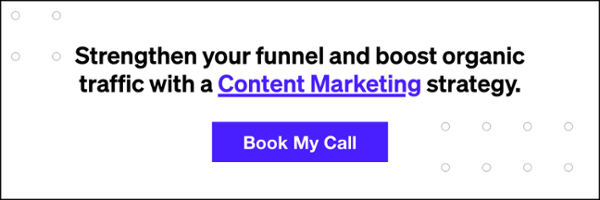How to Optimize a Blog Post for SEO
Blogs have become a useful marketing tool for industries of all sorts, but even an expertly-written blog can get lost in an online space inundated with content and competition.
The reality is that no matter how great a blog is, it won’t benefit people if they aren’t seeing it. Fortunately, an effective way bloggers can get noticed is by keeping search engine optimization (SEO) in mind throughout the blogging process.
Today we are going to take a look at the importance of SEO when it comes to blogging and provide some handy tips on how to optimize a blog post.
The Importance of Blogging with SEO in Mind
SEO has come a long way when it comes to blogging and there are many reasons for it. Most importantly, it makes your content more visible, improving your website’s search engine rankings overall.
It also provides the opportunity to utilize keywords in a valuable way, allowing you to expand your targeted keyword list. In addition, it creates many opportunities for internal linking, constructing a clearer picture of what your website (and business in general) has to offer when it comes to Google indexing the site. The shareability of blogs can also lead to valuable backlinks and social media mentions. Plus, blogging increases audience engagement, so blogging with SEO in mind can increase time spent on your website.
Of course, it’s also a great way to make sure your website always has fresh, relevant content.
How to Optimize Your Blog
Search engine algorithms have evolved a lot in recent years and will continue to change as the digital landscape does. The days of basic algorithms where keyword-stuffing could get you noticed are in the past.
To rank better in search engine results pages (SERPs) today, your content has to have value in the eyes of some pretty sophisticated search tools.
Here are some surefire ways you can optimize your blog posts to increase your rankings.
Utilize Content Clusters
The content cluster strategy is a method where one overarching topic is used to create a variety of blog content around it. Using the content cluster strategy, we have helped many clients grow their organic traffic and increase their domain authority.
This process starts by selecting an umbrella topic within the industry and conducting some keyword research to make sure there is search volume. If you find that the topic is in your competitive range, you can begin building articles around it. Each of these articles should focus on a different subtopic that can directly link back to the main topic. For this part of the process, our favorite tool to use is MarketMuse. This content optimization software analyzes your main topic to provide specific recommendations on what related areas your content can cover to improve search rankings.
When you are constructing each related blog post, it is critical to link it to the overarching topic (and to other related articles) with strategic anchor text. This helps create a clearer picture for Google to index your site when the content is crawled. On top of that, the array of content related to the overarching topic will indicate to Google that you are an authority on it, and, in turn, you will be rewarded with higher search rankings.
Write Quality Content
As we mentioned earlier, it takes more than keywords to get the attention of the latest search algorithms. Now, a high amount of clout is given to articles that provide content of value to readers. That said, we can’t stress enough how important it is that you write quality content.
The quality and originality of your blog posts will earn you major points in the eyes of search algorithms. So it’s important that your grammar and spelling are up to par, you use relevant keywords in strategic ways, the content is both accurate and up-to-date, there are no broken links, and there are few distracting ads.
In addition, your content needs to clearly have a purpose to anyone who may come across it. Content shouldn’t be created simply to have something there for web tools to crawl, and a high word count and creative headlines aren’t enough on their own. You should be providing something to the reader, whether that is entertainment, information, or another benefit. Put your potential readers first and ask yourself if the content is useful to them. If it isn’t, don’t expect to see much traffic.
Use Keywords Throughout Each Article
While they aren’t the only piece of the SEO puzzle, keywords still have influence on how your content ranks in SERPs. It’s imperative that you are using the right ones, and integrating them into your content in an organic way.
Finding the right keywords starts with doing keyword research. You need to choose keywords that not only rank well but can bring traffic. SEMrush offers some useful tools that can help you generate keywords, estimate keyword difficulty, and ensure that there is search volume behind each keyword. It can also help you and find low-hanging fruit, identifying keywords that don’t have much competition – a gap you can fill.
Relevance of keywords should also be considered. For this, we love the Keyword Relevance Engine offered by MarketMuse. Not only does it provide related keywords, but it gives them a relevance score to help you prioritize which particular ones you should be focusing on.
When it comes to using the keywords, it’s good to have posts that center around your best-ranking ones. But it is also important that the keywords show up on multiple pages so that Google recognizes that you are an authority on them.
Keep in mind that Google crawls all your content, so be sure you are integrating keywords not only into body content, but into your titles, headings, subheadings, metadata, image alt text, and even URLs where you can.
Use Metadata to Your Advantage
Metadata refers to any sort of data that describes another piece of data. When it comes to SEO, metadata can provide clear context and a description for any element on a webpage.
While metadata may sound like small details, they can have a big impact because they tell a reader or search engine what to expect from your blog content. And Google definitely crawls metadata to help it establish how to rank your pages.
Here are a few places you can use metadata to your advantage when it comes to SEO:
- Title Tags – basically, a title tag is an HTML piece that indicates the title of a webpage. It is displayed in both the SERPs (as the clickable title that appears at the top of a search result) and in the tabs of a browser. Be sure that you utilize title tags and in a useful way. Each should accurately describe what will be found on the page, be concise (aim for around 60 characters or less), and use keywords in a natural way.
- Meta Descriptions – a meta description is an HTML attribute that provides a short summary of a webpage. On SERPs, it’s the snippet of text under the clickable title tag that explains what is on that page in about 155 characters. For SEO purposes, you should try to create strong meta descriptions that utilize targeted keywords, are highly specific to the content on the page, communicate the benefits of the content, and compel users to want to click through
- URLs – many people don’t take the URL of a page into account when it comes to SEO, but it matters! Algorithms consider URLs when ranking content, so each should be optimized as well. To make them easier for Google to index, you should include descriptive keywords, avoid unnecessary words/characters, and follow a consistent structure in the way you name your URLs.
- Image Alt Text – an image alt tag describes the attributes of an image used on a webpage. Google places value on these tags that usually appear when you hover over an image, so be sure you are using them to your benefit. Use keywords when applicable, and be sure the alt text indicates not only what is in the image, but how it relates to the other content on the page.
Avoid Duplicate Content
While it is wise to have content that relates back to other topics you have covered, it’s just as crucial that the content is actually unique, not just copied and pasted from other posts or pages. In fact, Google Search Quality Evaluator Guidelines have clearly stated that “the Lowest rating is appropriate if all or almost all of the main content on the page is copied with little or no time, effort, expertise, manual curation, or added value for users.”
Put simply, your content must be original. If it shows up verbatim other places on the internet, you may be penalized when it comes to appearing in searches.
Wrapping Up
These SEO tips for blogging are not exhaustive, but they should provide a great backbone for how to optimize your blog. By using the information above, you can expect to see better SERPs and increased organic traffic on your webpage while creating more effective blog content in general.



















